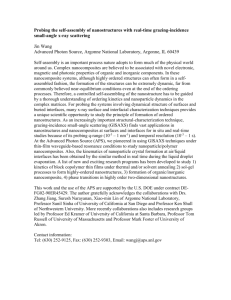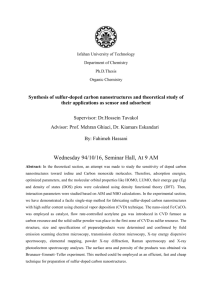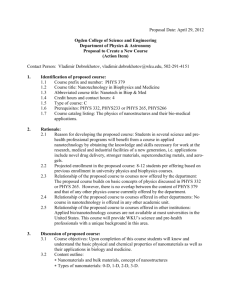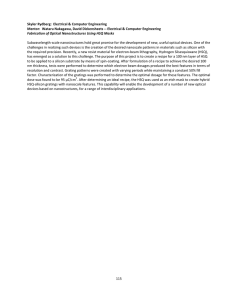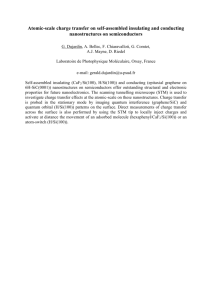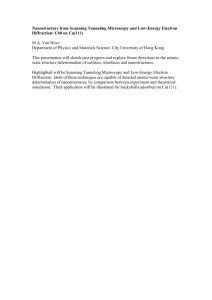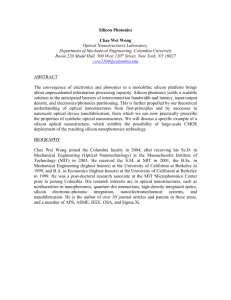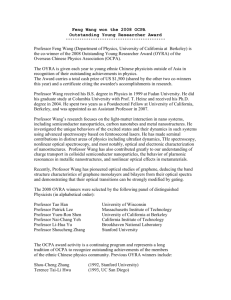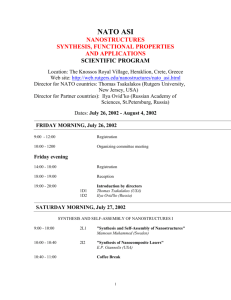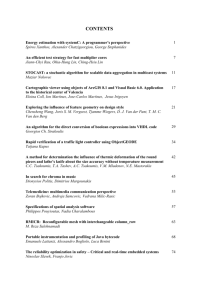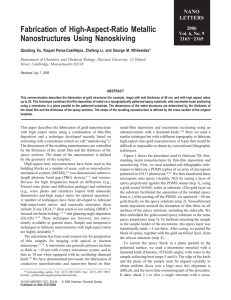Mahi Singh - Wayne State University Physics and Astronomy
advertisement
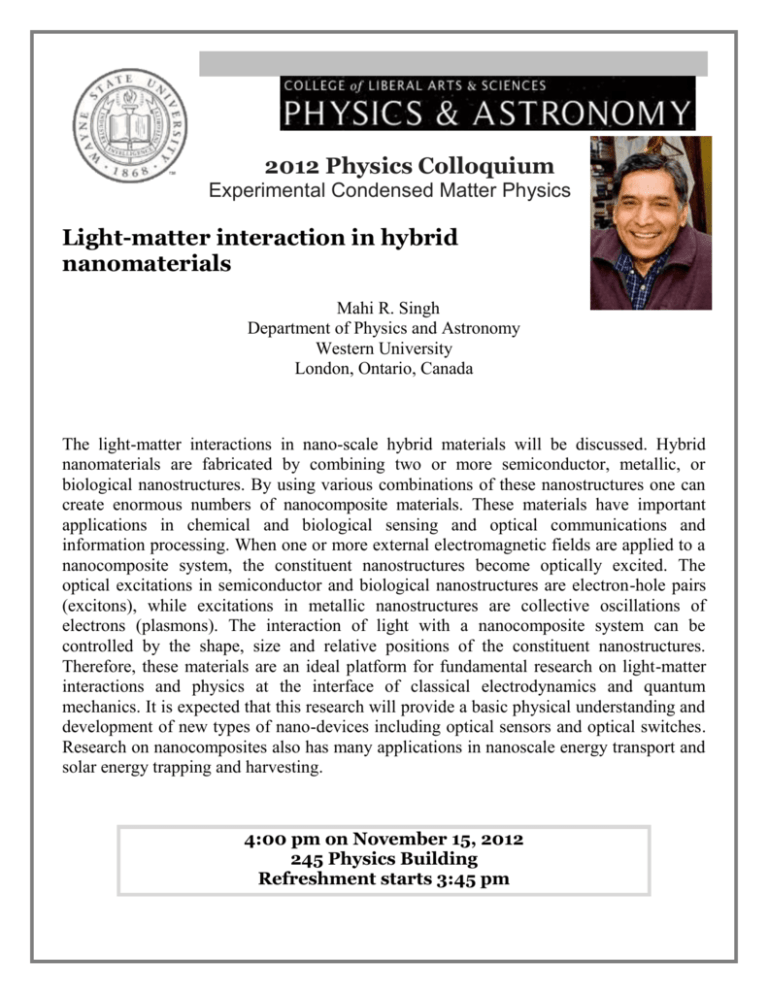
2012 Physics Colloquium Experimental Condensed Matter Physics Light-matter interaction in hybrid nanomaterials Mahi R. Singh Department of Physics and Astronomy Western University London, Ontario, Canada The light-matter interactions in nano-scale hybrid materials will be discussed. Hybrid nanomaterials are fabricated by combining two or more semiconductor, metallic, or biological nanostructures. By using various combinations of these nanostructures one can create enormous numbers of nanocomposite materials. These materials have important applications in chemical and biological sensing and optical communications and information processing. When one or more external electromagnetic fields are applied to a nanocomposite system, the constituent nanostructures become optically excited. The optical excitations in semiconductor and biological nanostructures are electron-hole pairs (excitons), while excitations in metallic nanostructures are collective oscillations of electrons (plasmons). The interaction of light with a nanocomposite system can be controlled by the shape, size and relative positions of the constituent nanostructures. Therefore, these materials are an ideal platform for fundamental research on light-matter interactions and physics at the interface of classical electrodynamics and quantum mechanics. It is expected that this research will provide a basic physical understanding and development of new types of nano-devices including optical sensors and optical switches. Research on nanocomposites also has many applications in nanoscale energy transport and solar energy trapping and harvesting. 4:00 pm on November 15, 2012 245 Physics Building Refreshment starts 3:45 pm

